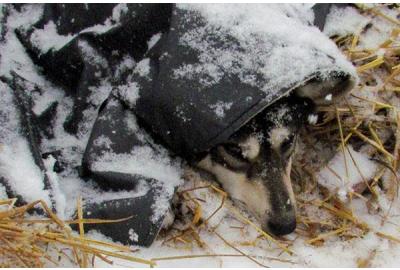Many dogs prefer to avoid chilly winds and getting their paws cold and wet—which means they may spend more time indoors during the winter.
Even if your pup wants to venture outside in snow and ice, there are potential hazards. Plus, dogs with arthritis or other health conditions may develop worsening symptoms as the temperature drops.
Although humans and dogs alike can enjoy some winter evenings spent snuggling under blankets and streaming a movie, it’s important to develop a few habits for staying active.
Staying active benefits your furry friend’s physical, mental, and emotional health by preventing weight gain, keeping their mind active, and contributing to overall health and wellbeing during winter.
Here are a few ideas…
Indoor Activities To Enjoy With Your Dog During the Winter
- Fetch or Chase: If there’s room in your home or apartment, you can bring running games indoors. Just move fragile items and sharp furniture edges out of the running path.
- Games Like Tag or Hide-and-Seek: Training your pal to play these games may take time. But with a little patience, you can have a lot of fun together!
- Tug-of-War: In addition to being enjoyable, a good game of tug acts as a form of resistance training (for both you and your dog).
- Doga: Dog yoga, offered at some studios or via YouTube, is a gentle stretching practice for you and your dog to do together.
- Mental stimulation: Keep your dog’s mind active with puzzle feeders, new toys, or training.
Enjoy the Outdoors Safely During Wintertime
Some pups may enjoy going for shorter walks in cold weather or running through a backyard full of freshly fallen snow.
When it comes to winter activities, safety should always be a top priority.
Also, try to note your dog’s preferences and cold tolerance. Dogs like Malamutes and Huskies may love the snow, while short-haired Chihuahuas and older dogs may find wintry weather unpleasant and be more prone to hypothermia or frostbite.
When planning outdoor winter activities for your dog, here are a few important things to keep in mind…
- Shorten the lengths of your walks, unless your pal loves the weather, is healthy, and is fully acclimated to cold weather activities. Turn back toward home well before your dog shows any signs of slowing down.
- Monitor for signs of hypothermia, such as lethargy or shivering.
- Keep your dog warm. Limit time outdoors, invest in a dog coat or sweater, and offer a warm sleeping spot free of cold draughts.
- Protect your dog’s paws from frostbite, slippery ice, sharp salt crystals, and de-icing chemicals (which can cause skin irritation and also be toxic if ingested from your dog licking their paws). Try out some dog booties, and wash your dog’s paws in lukewarm water after a walk. Then apply a dog paw balm to sooth and moisturize the paw pads.
- Ask your veterinarian for advice. For example, they may recommend additional arthritis supplements during cold weather.
Although winter presents unique challenges to dog owners, the season can also be a fun time to enjoy bonding and new activities with your furry friend.
With a little planning, your pup can stay physically and mentally active all year long
Additional Reading:
Teach Your Dog to Play Hide-and-Seek: https://www.care.com/c/stories/6240/hide-and-seek-the-best-dog-play-activity-eve/
ASPCA Cold Weather Safety Tips: https://www.aspca.org/pet-care/general-pet-care/cold-weather-safety-tips
More Indoor Winter Activities for Dogs: https://www.whole-dog-journal.com/training/ways-to-keep-your-dog-active-during-winter/






